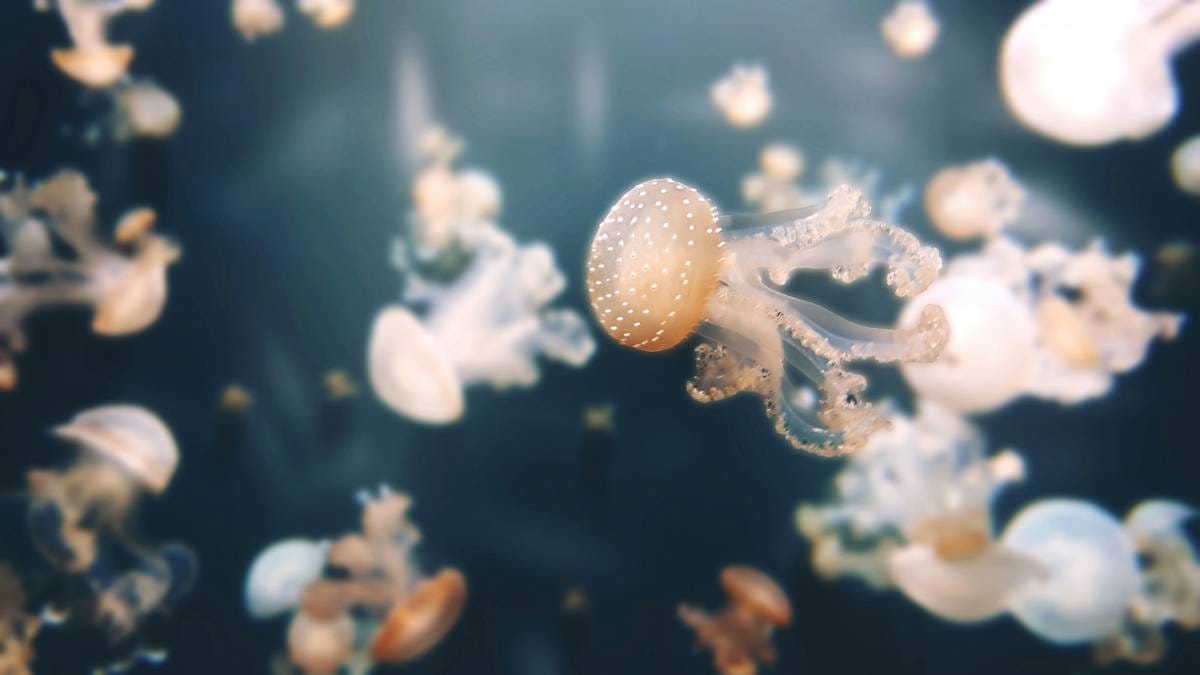As the sun climbs high over the Côte d’Azur, beach towels unfurl, sunglasses slip into place, and the Mediterranean shimmers with its signature allure. But amid the picture-perfect scenery of Monaco and its neighbouring beaches, there’s a small—but stinging—visitor making waves this summer: jellyfish.
Beautiful Waters, Hidden Dangers
You wouldn’t expect it looking at the calm, turquoise waters around Larvotto or Cap d’Ail, but beneath the surface, Pelagia noctiluca—the mauve stinger—is once again drifting into shore. Recognized by its translucent pink hue and glowing spots, this jellyfish is a regular summer guest in the Mediterranean. The problem? Its sting is no joke.
“It’s like a sudden electric shock,” say swimmers. You don’t see it coming, and within minutes, it’s burning and itching.
Though not dangerous for most, stings from Pelagia noctiluca can ruin a beach day in seconds, and for allergy-prone individuals, even trigger serious reactions.
Why Are There So Many Jellyfish This Year?
The answer lies in a mix of warmer waters, reduced natural predators like sea turtles, and favourable currents. In fact, jellyfish sightings have been so common that, earlier this June, swarms were spotted even inside the nets at Larvotto Beach—a protected swimming area.
Even the best barriers can’t always hold back nature. You need to stay informed before diving in.
The High-Tech Solution: Meduseo App
Fortunately, Riviera beachgoers now have a digital ally. Meduseo, a free smartphone app created by marine enthusiast Jérémy Deverdun, lets users check in real time whether jellyfish are floating nearby. Think of it as Waze for swimmers—but instead of traffic, it warns of tentacles.
The system relies on user reports, with colored markers on an interactive map:
Yellow = barely any jellyfish, Orange = some sightings, Red = heavy presence
It’s already gained traction along the coast, especially in hotspots like Nice, Antibes, and of course, here in Monaco.
Pay attention to coloured flags flying by beaches too. Look for a green flag flying high. That’s a good sign of lack of jellyfish.
And in Larvotto there is an information board near the First Aid centre there which often reports on jellyfish sightings.
Got Stung? Here’s What to Do—and Not Do
If you do get stung, don’t panic. The emergency services have a clear protocol:
Gently remove visible tentacles using tweezers or by rubbing moist sand over the skin.
Rinse with seawater—never tap water.
Disinfect the area with an antiseptic.
DON’T
Don’t apply alcohol.
Don’t suck or squeeze the wound.
And no, don’t pee on it—despite what your friend from that one backpacking trip swears.
Most stings subside within a few hours, but if symptoms worsen—breathing difficulty, vomiting, or fainting—call emergency services immediately. Swim Smart This Summer
Despite the jellyfish, the Riviera remains one of Europe’s top summer destinations. Monaco’s beaches—like the elegant Larvotto—offer monitored zones, lifeguards, and even jellyfish nets to maximize safety. Just be aware that nature tries to find its way in.
So before your next dip, check Meduseo, look for green flags, follow safety tips, and keep your eyes peeled in the water. The Riviera may be paradise—but even paradise has its prickly moments.
Bonnes vacances, and swim safe!









